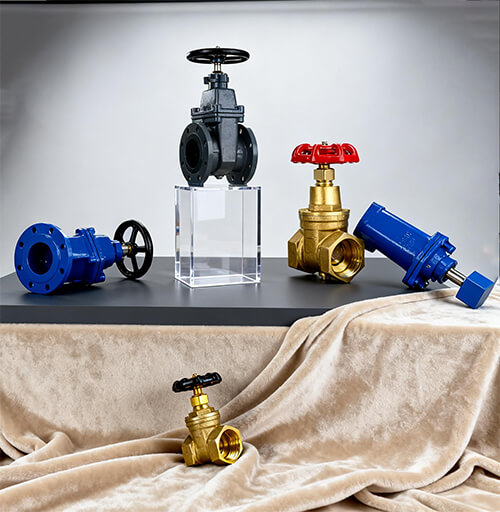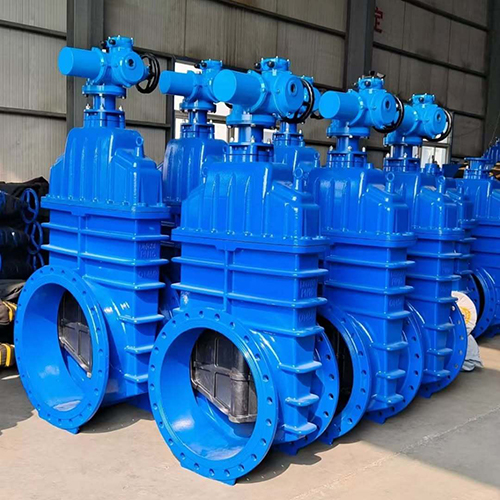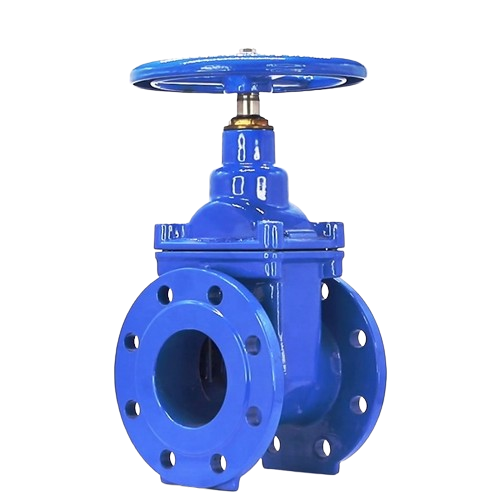Introduction
In industrial and commercial piping systems, reliable isolation of fluid flow is essential to ensure safety, efficiency, and performance. Among the many valve types available, the gate valve is one of the most widely recognized and commonly used. Known for its straightforward design and ability to provide tight shutoff, the gate valve has become a standard solution in water supply networks, oil and gas facilities, power plants, and numerous other sectors.
Basic Design & Working Principle
Main Components
-
Body: The pressure-retaining shell that houses internal parts.
-
Bonnet: Covers the top opening of the valve body and contains the stem seal.
-
Gate (or wedge): The disc-shaped element that moves up or down to block or allow flow.
-
Stem: Connects the gate to the actuator or handwheel.
-
Seat rings: Provide sealing surfaces for the gate.
-
Actuator/Handwheel: Used to raise or lower the gate.
How It Works
Gate valves function by raising or lowering a flat or wedge-shaped gate perpendicular to the fluid flow.
-
Open position: The gate is fully lifted, leaving a clear passage for fluid with minimal resistance.
-
Closed position: The gate is pressed tightly against the seats, stopping flow completely.
This linear motion design ensures low pressure drop when the valve is open, but it also means gate valves are not ideal for throttling, as partial opening can cause turbulence and erosion.

Types of Gate Valves
Based on Disc Design
-
Solid Wedge Gate Valve: The most common type.Simple and robust design.Suitable for various fluids but less tolerant of thermal expansion.
-
Flexible Wedge Gate Valve: Split or flexible design allows better alignment with seats.Handles thermal expansion and stress more effectively.
-
Split Wedge or Parallel Slide Gate Valve: Two-piece design that prevents binding.Provides tight sealing, commonly used in steam applications.
Based on Stem Movement
-
Rising Stem Gate Valve (OS&Y – Outside Screw and Yoke): The stem visibly moves up and down as the valve operates.Easy to check valve position.Common in fire protection and critical services.
-
Non-Rising Stem Gate Valve: Stem does not rise; the gate moves along the stem threads.Saves space, ideal for underground or confined installations.
Based on Body Construction
-
Bolted Bonnet Gate Valve: Most common, allows easy maintenance.
-
Welded Bonnet Gate Valve: Lightweight, leak-proof, used in high-pressure systems.
-
Pressure-Seal Bonnet Gate Valve: Self-sealing under pressure, ideal for high-pressure and high-temperature applications.

Materials & Construction
Body Materials
-
Cast iron or ductile iron: Used in water supply and low-pressure systems.
-
Carbon steel: Handles higher pressures and temperatures.
-
Stainless steel: Provides corrosion resistance in aggressive environments.
-
Alloy steels and exotic alloys: Suitable for extreme services like oil, gas, and petrochemical applications.
Gate and Seat Materials
-
Bronze or brass: Resistant to corrosion, used in water and marine systems.
-
Stainless steel: Provides strength and corrosion resistance.
-
Hard-faced alloys (e.g., Stellite): Used for severe service with high wear and temperature.
Sealing and Packing
-
Elastomer O-rings and gaskets: Common in resilient-seated valves.
-
Graphite packing: Suitable for high-temperature services.
Advantages of Gate Valves
-
Full Bore Flow: The unobstructed pathway minimizes pressure loss.
-
Excellent Shutoff Capability: Provides tight sealing in closed position.
-
Wide Range of Sizes: Available in small to very large diameters.
-
Versatility: Suitable for liquid, gas, and slurry applications.
-
Bidirectional Flow: Can handle flow from either direction.
-
Durability: Rugged design, capable of long service life under proper conditions.

Limitations & Challenges
-
Slow Operation: Requires multiple turns of the handwheel, making them unsuitable for quick shutoff.
-
Not for Throttling: Partially open operation can damage the gate and seats.
-
Size and Weight: Large-diameter gate valves can be heavy and costly.
-
Maintenance Requirements: Stem packing, seats, and sealing surfaces need periodic attention.
Applications Across Industries
-
Water Supply & Distribution: Common in municipal water networks and reservoirs.
-
Oil & Gas: Suitable for crude oil, refined products, and natural gas pipelines.
-
Power Generation: Steam, cooling water, and condensate systems.
-
Chemical & Petrochemical: Handles aggressive and corrosive fluids.
-
Marine & Shipbuilding: Used in ballast, bilge, and cooling water systems.
-
Mining & Slurry Handling: Heavy-duty designs manage abrasive slurries.
Selection Criteria
-
Pressure and Temperature Ratings: Ensure the valve meets system requirements.
-
Disc Design: Solid wedge, flexible wedge, or split wedge depending on service conditions.
-
Stem Type: Rising or non-rising stem based on available space.
-
Body Material: Must match fluid properties (corrosion, temperature, abrasiveness).
-
Sealing Requirements: Soft-seated vs. metal-seated options.
-
Actuation Method: Manual, electric, pneumatic, or hydraulic.
-
Compliance Standards: API, ASME, ISO, or other relevant certifications.
Company & Product Advantages
At Qingdao I-Flow, we understand that the reliability of a gate valve directly impacts the efficiency and safety of entire piping systems. Since 2010, we have specialized in manufacturing high-quality gate valves designed to meet international standards, serving clients in over 40 countries worldwide
Why Choose I-Flow Gate Valves
-
Comprehensive Product Range: From small cast iron gate valves to huge rising stem gate valves for industrial and marine applications.
-
Material Excellence: Available in cast iron, ductile iron, carbon steel, stainless steel, and bronze, ensuring compatibility with diverse media.
-
Certifications: CE, WRAS, DNV, GL, LR, and ABS approvals, trusted for global infrastructure and marine projects.
-
Proven Reliability: Successfully installed in high-profile projects such as Shangri-La Hotel, Kerry Center, MSC vessels, and international water treatment plants.
-
Customer-Centered Service: Fast response, competitive pricing, and strict ISO 9001 quality control for guaranteed satisfaction.
Post time: Sep-24-2025
